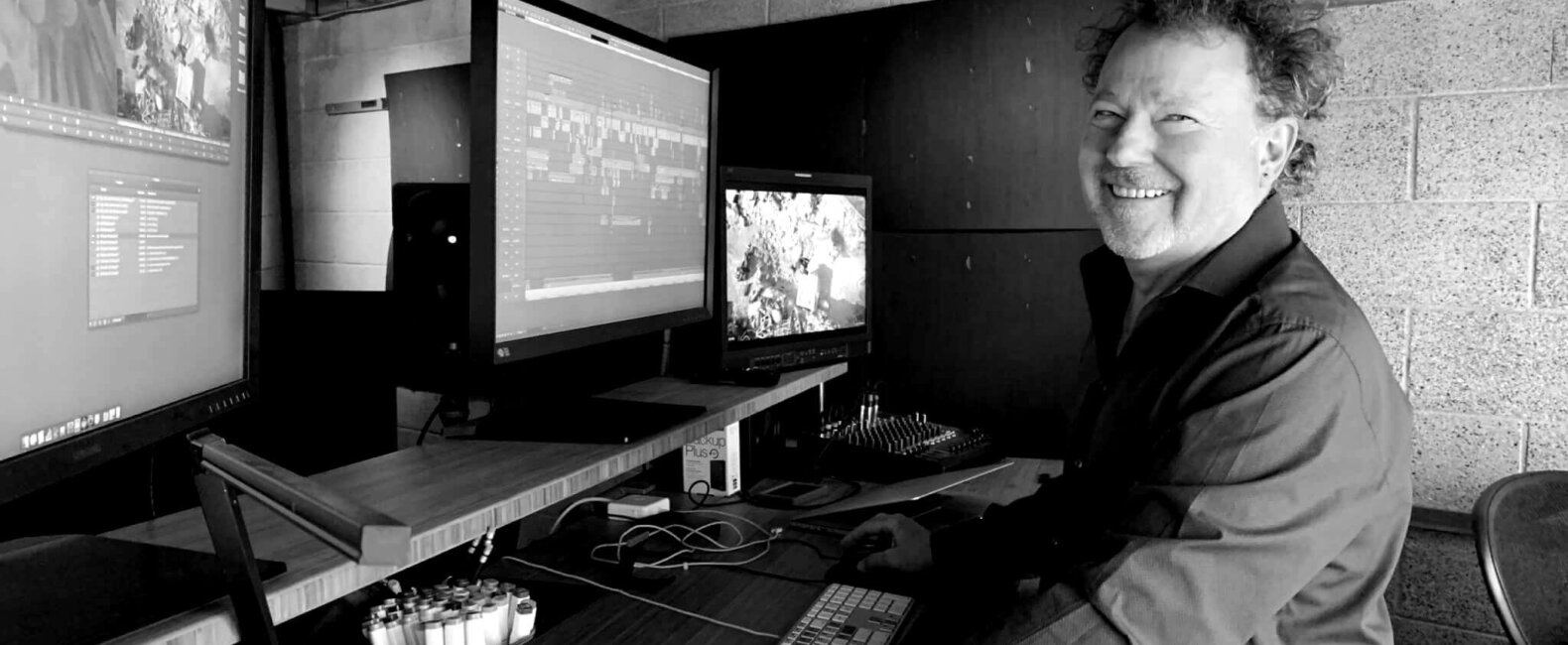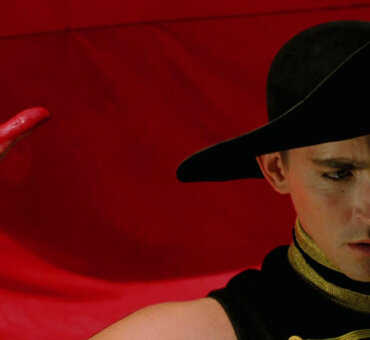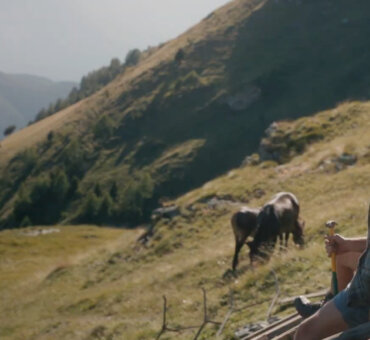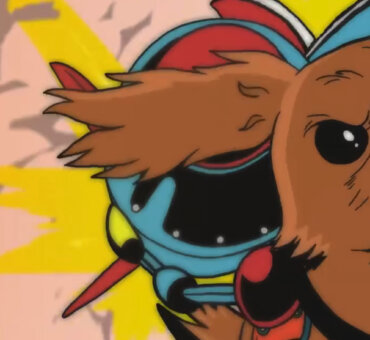Orson Welles once said, “The whole eloquence of cinema is achieved in the editing room.” This implies that there’s a “before” in the process, too, a not-so-eloquent part. In fact, it can be a real mess and no one understands this more than Michael Ruscio, ACE.
As an editor, Michael helped bring television into the major leagues in the early 2000s, editing throughout the entirety of Six Feet Under and working on major projects like True Blood, Dexter, Homeland, The Leftovers, and much more. Most recently, he took on Amazon’s sweeping fantasy series Carnival Row.
Filmmakers like Michael understand how important a consistent edit is for their projects. Episodic TV requires balance in tone, flow, continuity—and there’s generally several directors and editors holding them up.
We caught up with Michael to talk about editing and his work on Carnival Row. What he shared is invaluable insights on:
- Editing Actors’ Performances
- Editing With Your Audience in Mind
- Editing For The Entire Project
- Editing For Your Characters
- Editing As a Team
Be sure to take a few notes about his process, but also don’t miss his perspective on editing in general. Now more than ever, TV editing requires a precision and mindset that will set you up for success in the face of that not-so-eloquent part we mentioned earlier.
Here’s acclaimed editor Michael Ruscio, ACE.
Editing Actors’ Performances
Filmsupply: How has your knowledge of acting shaped your editing career?
Michael Ruscio: I’m very fortunate because I understand performance so people gravitate to me for that reason. I’m able to look at a performance and understand what’s really authentic, what an actor is trying to do. I know about different adjustments or variations.
For example, on the first take an actor will come in and do what they planned to do. Then, you’ll see the second or third take, and they migrate from that because the director has asked them to do something a little different. Most directors will say the last take was really the best take. Often times, though, I find myself often going back to the first take.
Especially in television, where you’re serving a lot of masters— the director, the producers, showrunner, and then studio network—these cuts go through a lot of filters. I believe understanding the acting process has helped me guide performances and that’s what I’ve really loved. I certainly love that about directly working with actors and being able to find a couple of words to really key into their imagination and set them free on a certain path.
When do you know to guide a performance or let it speak for itself?
Many times, l look at dailies and see a key moment that I definitely want to be in—and sometimes those are very designed. Maybe it’s a scene where the actor is being pushed or there’s a big monologue. I’ll know in the scene I can give generously to an actor, to this character. Then, I can craft a geography or structure or understanding of who else is in the room or what they’re feeling, so I can deliver the performance to the audience. Give the scene it’s best, purest form and let it breathe in that moment.
It’s tricky because everything can’t breathe, so you need to have a variety of paces, certainly within a whole movie or a whole television show. Especially by the time you go through the notes process, you don’t get many moments where you can really surrender to a performance, but when something’s really outstanding, usually it will survive the various passes. It’s a very collaborative process. Everybody wants that moment.
Editing With Your Audience in Mind
How has editing for TV changed since you got into the game?
Television is not a durable good in the way you’ll watch a movie five or six times. Initially, shows like Six Feet Under and The Sopranos and The Wire were appointment television. You could watch a show on a Sunday and have your week built around what’s happening with the Fishers or what’s happening with Tony Soprano—even a comedy like Sex In The City.
Filmmakers would have the ability to tell the story the way they wanted to. Now, with so many streaming options, you’re very conscious as an editor that you can lose the audience. People give a movie something like eight or 10 minutes. On television, it’s even shorter.
You need to be conscious of pace. Audiences are more particular about what grabs them. Especially with a shorter series like Fleabag. I watched the entire series in one sitting. If you don’t catch people initially they won’t be willing to sit with you. Producers, studios, and networks are aware of that. There’s a real premium on grabbing people at the beginning of a show.
Can you eventually get enough equity from the audience to slow things down?
You’d hope that’s the case. You fight editorially to have that be the case. It’s a push and pull. You should be able to feel the audience and as an editor; your actual perspective is as an audience. People ask me how I can watch things so many times and not be tired of them. Sometimes you do get tired of them, but you need to be trained to absorb the whole thing.
I try to encourage the people I work with who are higher-ups to do the same thing. When you’re addressing notes, the fear is that you’ll lose the forest for the trees. You’ve done the changes, but they aren’t seeing the whole picture. As an editor, you’re fighting to preserve the whole picture.
How do you keep that broad perspective?
A couple different ways. I like to set up my room so that I’ve got my work area and then I have another place for when the director or producers are there. They can actually sit there on the couch and look at the monitor, but not necessarily behind my back while I’m pushing buttons.
When I’m alone, I’ll sit in the living room just watch the cut as if I was watching it at home. Or sometimes I’ll actually watch it at home, away from the console. I think you need to escape it because you get lost in that whole crochet of it. Putting yourself in a new place gives you a different perspective.
Editing For the Entire Project
In Carnival Row’s first episode, how did you arrive on the opening?
Carnival Row went through a lot of permutations. There was always a chase scene in the very beginning of episode one, but it was redone by Editor Emily Greene. She did the opening of episode one. That’s why we share credit on the episode.
Looking at it now, I see the seeds of what was there initially. But, it was really just Cara [Delevingne], running through the forests and being chased. There was always the concern of getting the audience to understand the world of the show, and they cut the scene to reflect that.
I had worked with three different editors on the project, initially. We all went on to other projects because we were meant to be done by may of 2018. I went on to Catch 22, finished it, and then they were still trying to lock the episodes. I came back to Carnival Row and worked on the episodes again. It really gave me an interesting look of what a project goes through between the studio and network and the producers. It was a fascinating bird’s eye view.
Did revisiting the project give you a new editing perspective?
Definitely. It was very beneficial. They were very respectful of me because I had a sort of veteran status, so I was able to watch the whole series. It’s something that I encourage the producers to do. It’s important because, for example, the origin episode where Philo [Orlando Bloom] meets Vignette [Cara Delevingne] was originally the fourth episode. They moved it up to the third episode because everyone liked it so much.
In revisiting it, I don’t think anybody had actually watched them all in that order. I watched one, two, four, three, five, six, seven, eight, so I had this specific perspective that the audience was going to have. I found some things that were being said that we weren’t going to hear until later or things that didn’t compute.
Editing For Your Characters
Did storylines change along with continuity?
They did build up the whole Vignette-Philo story. Initially, they were much more like strangers in a strange land. In the final product, you see several times that they have a history. It puts a different weight on it when you get to see that history. You know there’s something there, so you could fill in the blanks as an audience.
It was about balancing how much you want to give away and how much you’re intrigued by knowing just a little bit. I got my hands on several of the episodes that I had initially worked on. I wanted to show respect to the other editors, but there were a few things we’d always been bothered by. I was able to tweak some things for a point of view.
When I worked with Damon Lindelof on The Leftovers, he would always say, “Who am I in this scene? Whose eyes are we seeing this through?” We’d sacrifice entire shots based on these questions. For Carnival Row, there were a couple cases where I was able to re-craft a few things so it stayed in the right point of view.
Do you have an example?
The parliament scene in Episode 1 went through a lot of iterations. It was shot with Piety Breakspear [Indira Varma] looking in from the balcony with her husband, Absalom [Jared Harris], down below.
It was a real balance between her being perceived as too overbearing and her just being sort of an onlooker. There was a version where she walked in you saw the whole scene play through her eyes with a push into her face. There was also a version where we pushed in on Jared Harris in the beginning.
There was a lot of history to unpack in the scene, too. Ultimately, we decided to keep the perspective neutral because every way you played it was too weighted. Some of the great crane shots of Piety looking over didn’t make it. There’s a lot of stuff that didn’t make it because you’re not only meeting characters, you’re getting backstory and we wanted to keep a neutral, unweighted perspective.
Editing as a Team
How do you keep things consistent between so many different editors?
[Editor] Paul Trejo and I were very giving with each other. We showed each other material and our cuts, working closely together to keep the tone, keeping everybody in the same movie.
All of the editors shared cuts. Towards the end Alex Luna, who was my assistant in the time that I left for Catch 22, became an editor on the show. I would sit in with him and watch episodes. It was a very open-door policy within the show, being respectful of each other’s ideas. We all sort of borrowed a little bit of each other’s cuts.
You mentioned “keeping everybody in the same movie.” How do you achieve that?
So much of it is about being involved editorially with the director, show creator, and writer at the initial stages. You’re seeing storyboards and learning what the intent of each scene is. On Six Feet Under we had a lot of directors and they’d be doing their own thing. We weren’t in the tone meetings at that point and we told them we need to be in those conversations. They changed their whole design so editors were in these early meetings. I always tell producers that they’re going to get the best product if they include us early.
In that spirit of inclusion, you’ll be more generous towards other editors who are working on the project if you talk about what you’ve found or tell them the producer doesn’t like this music queue. I like to work in a collaborative way. If you return that same respect and camaraderie within your team, you’ll get back what you give out.






